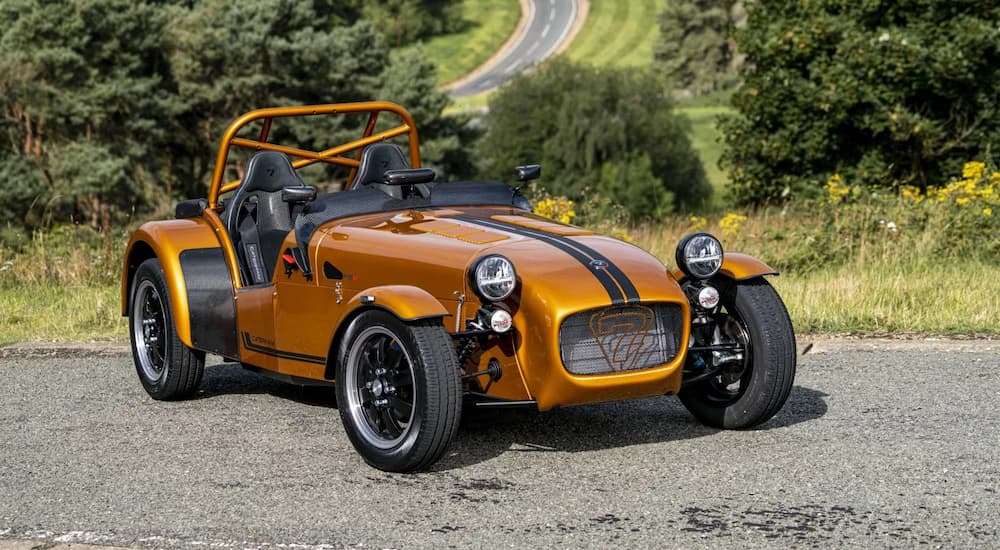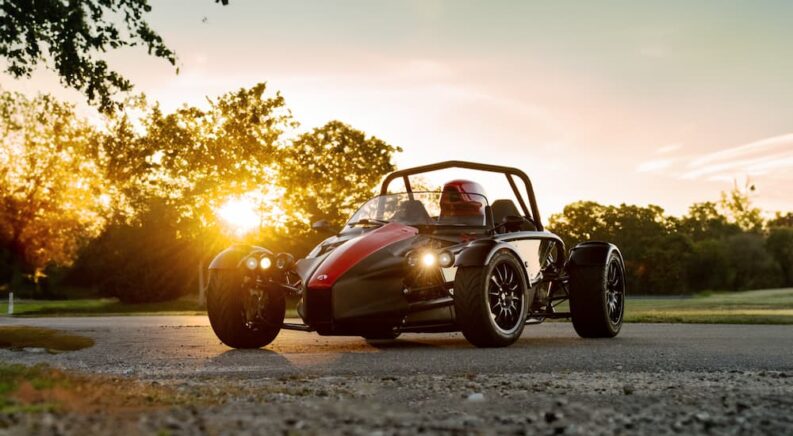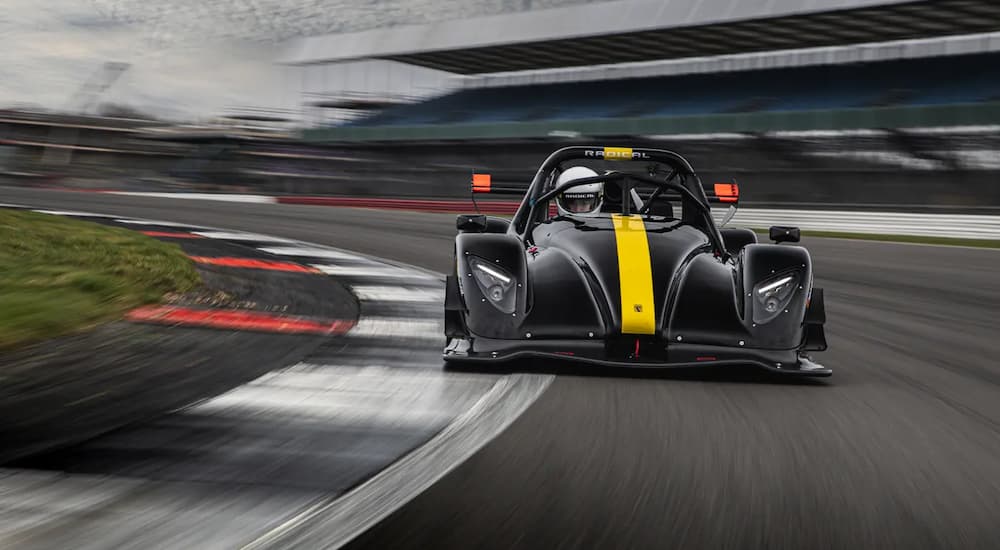At an average cost of $16 million, few drivers have the funds needed to splurge on a full-fledged Formula 1 car. Built from scratch and outfitted with engines that ring in around $10 million, each F1 car is a wholly original automotive creation with a price tag to match. Rounding the tight turns at Monaco or sprinting through the straights at Spa Francorchamps might not be in the cards for the non-Verstappens of the world, but that doesn’t mean that the race car segment is off the table entirely. From the Ariel Atom and Radical SR3 to the Caterham 7 and other lightweight track cars, plenty of surprisingly affordable options are on the market for those looking to live out their checkered flag dreams. Road-legal and boasting a power-to-weight ratio that you won’t find outside of some of the world’s premier racing competitions, these cars deliver a high-octane experience that is hard to forget. Let’s explore some of these track-ready models and learn just how accessible living life in the fast lane can be.
What Are They?
Before we get into some of our favorite factory-built race cars, we should take a moment to distinguish lightweight cars like the Ariel Atom and Caterham 7 from the factory-built race cars made by the likes of Porsche, Ferrari, and McLaren. The most obvious difference would be the price. While models like the Porsche 911 GT3 R, Ferrari 296 GT3, and McLaren Solus GT ring in between $250,000 and $4 million, lightweight track cars like the Ariel Atom, Caterham 7, and Radical SR3 can be had for between $25,000 and $100,000.
That’s a serious chunk of change, so what’s with the discrepancy between the two categories? The first are built for professional racing series like the World Endurance Championship and GT World Challenge. In contrast, the second group is generally used for club racing, time attack, or spec series events at your local race track. The Caterham 7 and Ariel Atom are also considered lightweight because they lack many finishing touches that are common to a $2 million supercar. These models employ a roofless, open-wheel design and skeletal frame that makes them look more like go-karts on steroids, not to mention a one- or two-passenger seating capacity and minimal electronics. They’re often sold as kit cars, meaning drivers can take the DIY approach to construction that provides great opportunities for getting to know the vehicle at the nuts-and-bolts level.
Despite this spartan approach to automotive design, these lightweight track cars are not entirely reserved for closed circuits and are often street legal, which represents another important difference when compared to the Porsche 911 GT3 R and its pricey compatriots. The lightweight vehicles are also designed to be easily upgraded and modified by moderately experienced drivers, while the pricier options tend to be a little more involved from a mechanical perspective. The GT cars have an edge regarding safety features, as they’re often designed with reinforced tubs, roll cages, fire suppression systems, and other FIA-spec crash structures that the more affordable models tend to lack.
If you’re looking for a fun, affordable entrée into the world of track racing, a lightweight track car is the perfect starting point. If you’re a little more ambitious, have deep pockets and plenty of experience behind the wheel of a $1 million-plus supercar, a factory-built race car will allow you to step up your game and test your mettle on the big stage.

Caterham 7
The Caterham 7 has a fascinating lineage that’s directly tied to one of the early standouts of the lightweight kit car segment in the Lotus 7. Founded by former Royal Air Force pilot Colin Chapman in 1952, Lotus quickly developed a reputation for designing and manufacturing powerful, lightweight cars that were well within the reach of the average driver. The Lotus 7 is widely regarded as Chapman’s pièce de résistance, but by 1973, the founder switched the company’s focus to limited series racing models and high-end sports cars. Lotus sold the rights to the 7 to Caterham Cars, which soon began producing an in-house version of the Lotus 7 dubbed the Caterham 7.
The current version of the 7 comes in four distinct models, all of which are named after their power-to-weight ratio. The base 170 produces around 170 hp per ton, which translates to about 74 real-world hp when you divide this output by the car’s 1,110-lb curb weight. The 170 is packed with a 660cc turbocharged Suzuki I-3 engine, while the rest of the lineup is treated to a 2.0L Ford Duratec I-4 design that really ups the ante in terms of performance. The 360 comes in both S (Street) and R (Race) trims, creates 180 hp, and can hit 60 mph in as little as 4.8 seconds with a top speed of 130 mph. You can do the math from here, but the Caterham 7 420 boasts 210 hp, and the 620 makes more than 300 hp and can sprint from zero to 60 mph in under 2.8 seconds thanks to an added supercharger, ensuring a truly hair-raising experience behind the wheel. A Heritage Range of limited-run models includes the Super Seven 600 and 2000, with retro-inspired details like ample chrome embellishments and flared front wings. The automaker has even experimented with an all-electric powertrain in the Two Seven EV concept model that was first shown at the 2023 Goodwood Festival of Speed.
Ariel Atom
The Ariel Atom also has a unique origin story as it was originally developed for a school project at the U.K.’s Coventry University in the early 1990s. Professor Simon Saunders shopped the design around, but when he failed to find any takers, he founded Solocrest Ltd., which would become Ariel Motor Company Ltd. in 1991. The original Ariel Atom was launched in 1999 and immediately turned heads with its ability to squeeze 190 hp out of a 1.8L engine. Ariel would team up with Honda for the Atom’s second generation, borrowing the supercharged 2.0L engines from the Civic Type R and Type S to allow the lightweight car to achieve up to 300 hp. Ariel continued to refine the Atom formula throughout the model’s successive generations with the Atom 3 and Atom 500, which brings us to the modern-day iteration in the Ariel Atom 4.
The 2018 Goodwood Festival of Speed marked the Atom 4’s coming-out party with a new Honda Type R turbo engine, allowing the car to claim 321 hp. The Atom 4 represents the most dramatic improvement in the badge’s history, with Ariel gracing the car with an all-new chassis, steering system, suspension, bodywork, and brakes, plus new aero elements, seating, and modern instruments that incorporate the latest in-vehicle tech. The Atom 4 can credit its glow-up to Honda, which produced a new, larger turbo engine for the Civic Type R that required Ariel to restructure the chassis. The automaker decided to overhaul the whole vehicle while it was at it, outfitting the Atom 4 with thicker steel tubes, a new suspension, and other enhancements that make the new version the most exciting to date. Designed with a six-speed manual gearbox (also courtesy of Honda), the Atom 4 can pump out 220, 290, or 320 hp depending on which of the three switchable engine-mapping options drivers select. It’s this sort of on-the-fly customization that makes the Atom 4 such a notable addition to the current lightweight lineup, though the car is a good deal pricer than the Caterham 7 at around $83,000 and isn’t available as a build-your-own kit car.
Radical SR3
Performance can never be treated as an afterthought when your car company is named Radical, and the British manufacturer certainly didn’t miss the memo. The SR3 represents the most popular offering from Radical Sportscars, founded in 1997 by amateur drivers and engineers Mick Hyde and Phil Abbott. The lightweight sports car was developed for FIA’s C3 class, but has quickly become a favorite amongst those who believe that life is best experienced at higher RPMs. Weighing in at less than 1,300 lbs and built with aero elements that give it cornering acceleration as high as two G, the SR3 relies on two different engines depending on the specific model. The SR3, SR3 RS, SR3 1300, and SR3 XX are powered by an engine pulled from the Suzuki Hayabusa 1300, which might sound a little suspect until you consider the low 1,300-lb curb weight. The motorcycle engine is more than up to the task, allowing the SR3 to notch between 202 and 226 hp depending on the specific model. The SR3 Turbo, SR3 SL (Street Legal), SR3 SS 1500, SR3 RSX, and SR3 XXR go with an I-4 Powertec engine capable of 232 to 316 hp, which should be more than enough to satisfy even the most diehard speed freaks.
Ariel has even produced some truly unhinged takes on the SR3, like the 375-hp TMG EV P001, the SR3 6.3 Supercharged claiming 756 hp thanks to a Mercedes-Benz supercharged V8, and the limited SR3 Diesel King of Pikes Peak 100 Years Edition that leverages a triple-turbocharged I-4 diesel engine to create some 1,000 hp. That amount of power is a little scary considering the SR3’s light weight and open-air design, but you sure don’t hear us complaining. Like the Caterham 7 and Ariel Atom, the SR3 is low on frills with little more than a footwell light, a 12-volt socket, and the heater required to achieve street legal status. If you’re in the market for comfort, the lightweight category would never be a fruitful hunting ground anyway. The SR3 is not a true kit car, and unlike the previous models, it does break the $100,000 mark with a starting price of around $107,990.
These three models don’t represent the full width and breadth of the lightweight kit car segment. Brands like KTM, Donkervoort, BAC, Vuhl, and Exomotive also produce some compelling models, but the 7, Atom, and SR3 are some of the more popular offerings on the market. Popularity isn’t everything, but it should factor into your buying decision due to the fact that these types of track cars are often raced in model-specific events that limit participation based on brand. If you aren’t looking to drop a cool $1 million on a factory-built race cars from one of the big names like Porsche, Ferrari, or McLaren, or you’re looking for a enthralling automotive project like the Caterham 7 that’ll provide hours of entertainment in terms of both building and racing, cars like the Caterham 7, Ariel Atom and Radical SR3 are all worth a closer look. Their street-legal status might depend on your specific state, but all can be modified to provide a head-turning ride that’s sure to garner plenty of attention as you zip down the highway or enjoy a relaxing cruise on a warm summer night.





